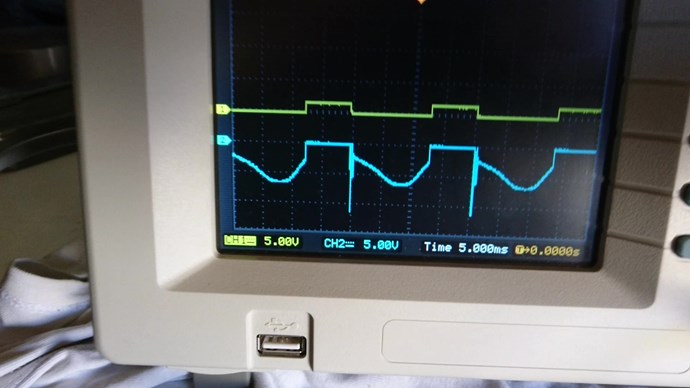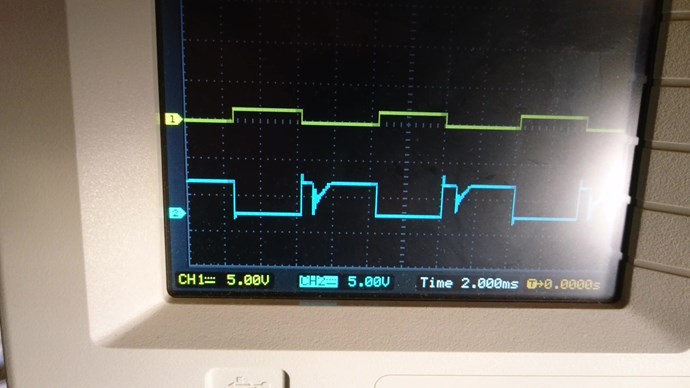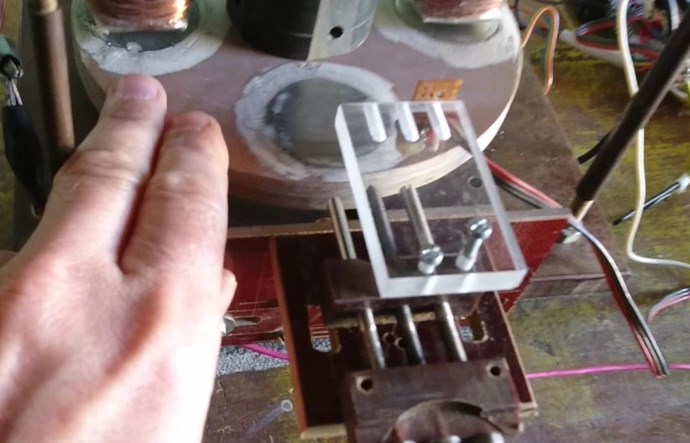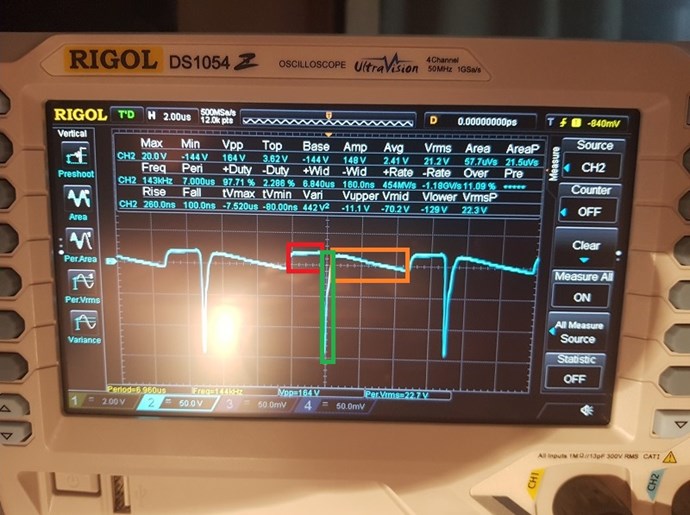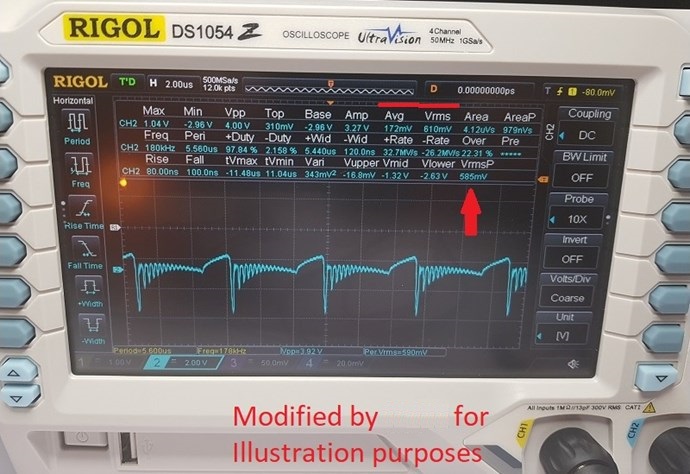Hey Fighter,
This is correct! The RMS Values are including the Power being returned back to the Source and not giving you an indication of the Direction of Current.
Direct Current, is a unidirectional Current, its not supposed to Alternate over Time or it is then AC, Alternating Current.
E.G: The scope records: 0123456789876543210.
Now we Integrate ( Series addition ) : 0 + 1 + 2 + 3 + 4 + 5 + 6 + 7 + 8 + 9 + 8 + 7 + 6 + 5 + 4 + 3 + 2 + 1 + 0 = 81.
Now divide by the number of points recorded: 81 / 19 = 4.26315789.
4.26315789 is the average.
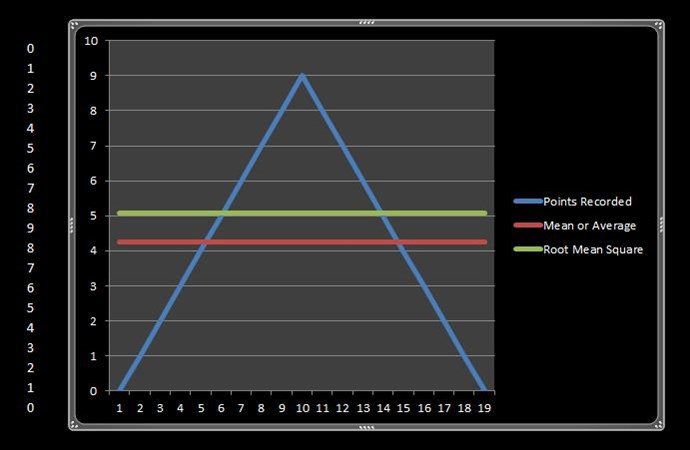
What does this mean? It means we can split the Triangle above the Mean line, down the middle, and put the two sides in the open area on the ends, the area is the same. This gives us a perfect Mean value. The shown RMS Value you can see is well above the mean height! There is no even distribution of the Waveform above the RMS value to the ends of the Wave shape. The area is not equal to the open area on the sides under the line!
The reason straight DC is so easy to measure is because its a straight line:
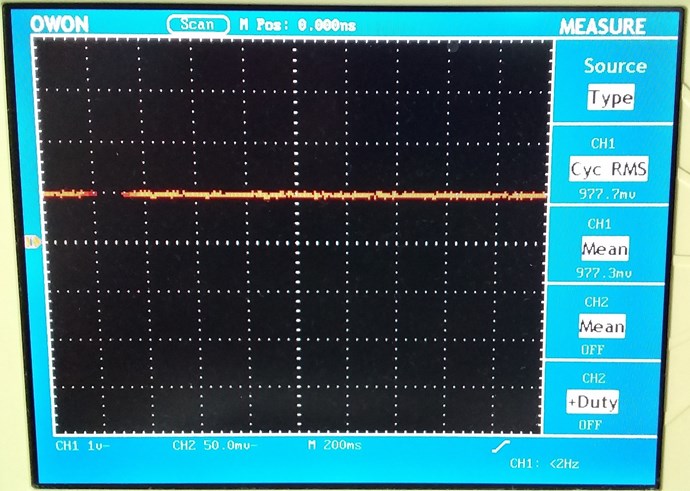
The area under the Straight Line, the Waveform is a Rectangular Box: H x W = Area. 977.7mV x 1t = 977.7mV
NOTE: The ZPM is a NON-Linear Load.
Now in the ZPM, if we use RMS, we cant include Power coming back as USED Power, which is what RMS power setting is doing! This is wrong!
Also NOTE: RMS is fine for Linear Loads! It will measure almost the same as Mean! See Here.
RMS is Root Mean Square, the equation is fairly straight forward:

See www.electronics-tutorials.ws for much better information on all this.
So we could say:
int TotalPoints = 19;
double Integration = Math.Pow(0, 2) + Math.Pow(1, 2)
+ Math.Pow(2, 2) + Math.Pow(3, 2)
+ Math.Pow(4, 2) + Math.Pow(5, 2)
+ Math.Pow(6, 2) + Math.Pow(7, 2)
+ Math.Pow(8, 2) + Math.Pow(9, 2)
+ Math.Pow(8, 2) + Math.Pow(7, 2)
+ Math.Pow(6, 2) + Math.Pow(5, 2)
+ Math.Pow(4, 2) + Math.Pow(3, 2)
+ Math.Pow(2, 2) + Math.Pow(1, 2) + Math.Pow(0, 2);
double Average = Integration / TotalPoints;
MessageBox.Show("RMS: " + Math.Sqrt(Average));
RMS: 5.07314913098986
Note: a small difference: 5.07314913 RMS vs 4.26315789 Mean, the difference: 0.80999124. The values often vary a little between RMS and Mean, but with a Non-Linear-Load, Mean must be used.
Note: I have used the same numbers in this example, RMS Voltage and Mean Voltage readings on the scope can be different, so please be aware this example is only that, an example.
Note: (81 / 19)2 is not the same as squaring each number and adding.
Again, RMS does not give you an indication of the Direction of Power, the reading is always Positive, the Mean or Average setting is not this way! Mean can be Positive, Negative or Zero. Zero means all the Power you send Out to your Load ( DUT ) You get the exact same back again! 1 + -1 = 0...
For some it may seem impossible, but Electromagnetic Induction really does work!
Now I am not perfect I make mistakes! So I urge you to all do your own research on this! Research how to measure the Area under a Curve ( Scope Waveform ) and find out more on this. I did post several very good videos on this!
Remember: Every pixel drawn on your scope screen, it is a Potential Value Recorded. Millions of values measured then recorded of that Potential over Time. All these values, in the Scope Buffer, indicate Instantaneous Power measured over time, this is the X Axis, the values themselves are the Y Axis, Amplitude.
P.S: a better code example if you want to play with this:
Integration = 0.0;
double[] Points = new double[] { 0.0, 1.0, 2.0, 3.0, 4.0, 5.0, 6.0, 7.0, 8.0, 9.0, 8.0, 7.0, 6.0, 5.0, 4.0, 3.0, 2.0, 1.0, 0.0 };
for (int i = 0; i < Points.Length; i++)
Integration += Math.Pow((Points[i]), 2);
double Mean = Integration / Points.Length;
MessageBox.Show("RMS: " + Math.Sqrt(Mean));

